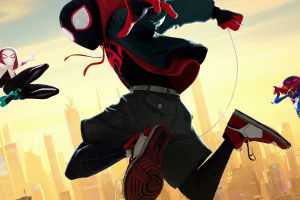When we sit down to watch a movie, it's easy to overlook the invisible art of editing. Yet, behind every cut, transition, and rhythm of a scene lies a significant impact on how we perceive and feel the story.
Editing and rhythm in film are not just technical aspects; they are emotional tools. These elements help filmmakers manipulate time, create tension, and ultimately guide the audience through the emotional journey of the narrative.
Whether we realize it or not, the pacing and editing of a film are often what separate a good movie from a truly unforgettable one.
The Role of Editing in Storytelling
At its core, editing is the process of shaping and refining the raw footage into a cohesive and compelling story. It is through editing that filmmakers control the flow of time—how long we linger on a particular moment, how quickly we move from one scene to the next, and even how we piece together different perspectives to create meaning. Editing does more than simply stitch scenes together; it defines the emotional landscape of the film.
Take, for example, a chase scene. The rapid-fire cuts, quick pacing, and jarring transitions are meant to heighten the intensity of the moment. The choice of when to cut away or linger on a shot can keep us on the edge of our seats or make us feel the crushing weight of a character's loss. A film like Mad Max: Fury Road excels in this technique—its fast-paced editing mirrors the chaotic world the characters inhabit, making the viewer feel every moment of desperation and survival.
Rhythm: The Heartbeat of a Film
While editing controls the structural flow of a movie, rhythm determines the emotional pulse of a film. Just like a song, the rhythm of a movie dictates its tempo, creating moments of suspense, relief, excitement, and tension. The rhythm isn't just about how fast or slow a film moves; it's about the emotional pacing that matches the story.
We've all experienced films that drag on, where moments feel too long, or films that feel rushed, where we don't get enough time to process what's happening. The rhythm of a film makes sure that the emotional beats hit at the right time, allowing us to connect with the characters and the story.
Consider a romantic drama. In films like La La Land, the rhythm plays a crucial role in making us feel the highs and lows of the characters' relationship. The pacing of the scenes—from the slow, intimate moments to the fast-moving, upbeat musical numbers—guides our emotions, making us root for the characters or feel their heartbreak. The timing of each scene and transition allows the emotional content to resonate deeply with the audience.
Emotional Impact of Editing and Rhythm
The emotional power of editing and rhythm lies in their ability to manipulate time. When a director wants us to feel the weight of a tragic moment, they might slow down the pace of the editing. A prolonged close-up or a long shot allows us to experience the emotional depth of a character's feelings. In contrast, a fast-paced editing style in an action sequence can create a sense of urgency and excitement, pushing us to the edge of our seats.
Take the slow-motion technique, which is frequently used to create tension or highlight a character's inner conflict. In The Matrix, the famous "projectile time" effect is a perfect example of how editing and rhythm work in tandem.
The slow-motion effect in combination with the precise timing of the camera movement makes the action feel more significant, making the audience feel like they're part of the character's experience. This heightened sense of immersion is a product of carefully controlled editing and rhythm.
The Future of Film Editing and Rhythm
As technology continues to advance, so too will the ways in which filmmakers approach editing and rhythm. With the rise of virtual reality (VR) and immersive cinema, we can expect new forms of editing that are not confined to the traditional methods of film. Directors may experiment with real-time editing, creating films that respond to the audience's choices and actions, further blurring the line between film and interactive experience.
Films like Enter the Void have already experimented with non-linear storytelling and unique pacing, creating experiences where the flow of time itself becomes part of the narrative. These innovations will continue to reshape how we perceive editing and rhythm, pushing the boundaries of emotional storytelling and audience engagement.
In the end, editing and rhythm are the silent yet powerful architects of a film's emotional architecture. They are the tools through which filmmakers create not only the structure of the story but also the emotional resonance that we carry with us long after the credits roll.
By carefully manipulating time and pacing, editors guide us through a spectrum of emotions, ensuring that every cut, every beat, and every moment of tension lands with the desired impact. It's this mastery of rhythm and editing that transforms a simple film into an experience—a shared journey between the audience and the screen.
So, next time you watch a film, pay attention to the pacing, the cuts, and the rhythm. You may find that these seemingly small details are the very reasons you laughed, cried, or sat on the edge of your seat, unable to look away.

